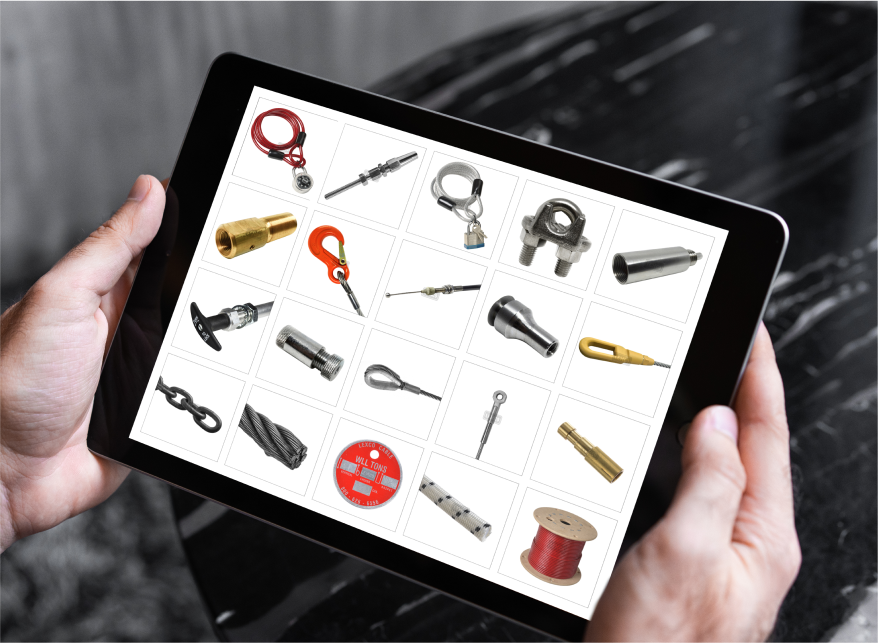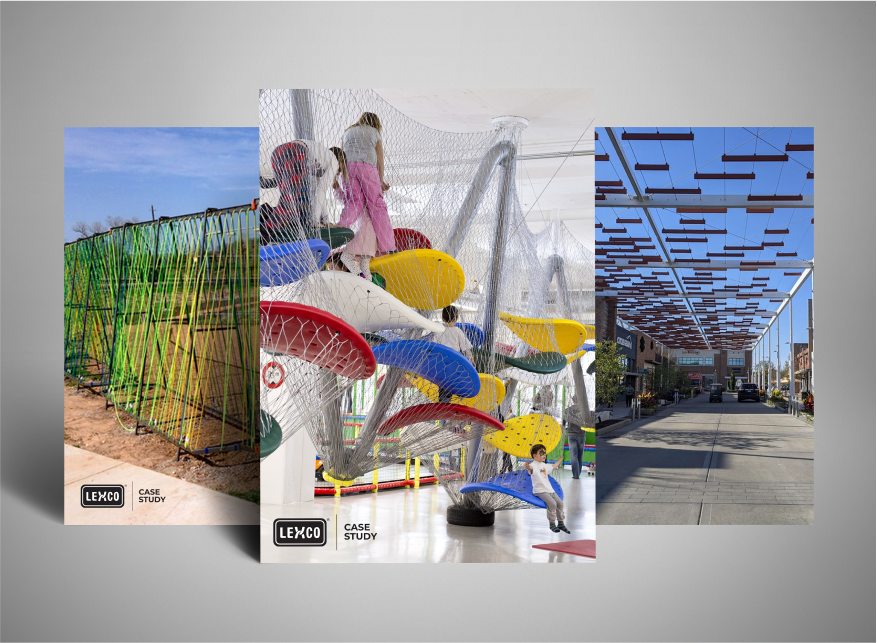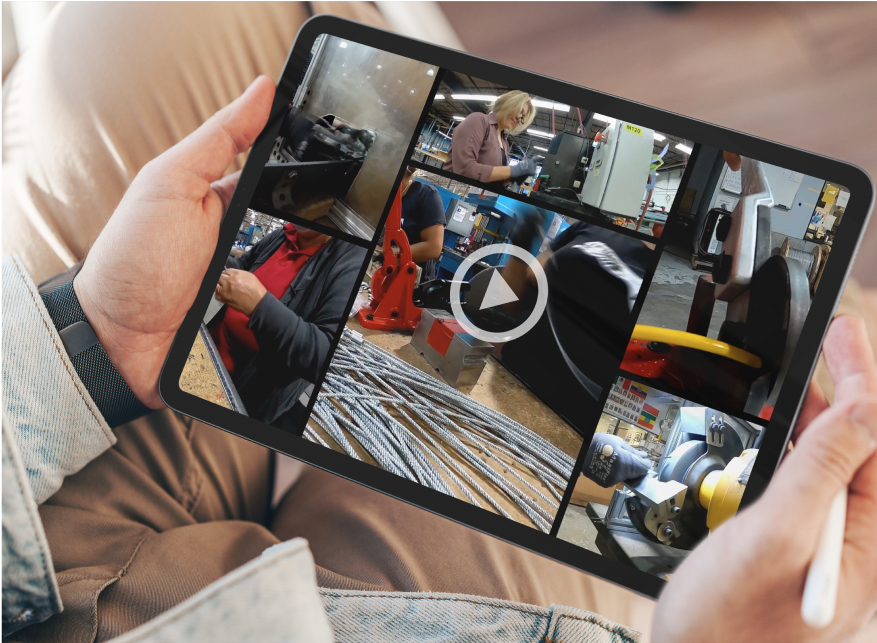
USES, APPLICATIONS, AND TYPES OF WIRE ROPE USED IN THE AUTOMOTIVE INDUSTRY

Wire rope and aircraft cable can be found in virtually every type of finished vehicle, such as cars, trucks, RVs, all-terrain vehicles (ATVs), motorcycles, buses, mobile homes, and trailers. We’ll examine how automotive cable is deployed and the various types and components used in assemblies.

Uses and Applications of Automotive Cable
Automotive Manufacturing
Nearly 85 million motor vehicles were produced worldwide in 2022 – and wire rope was used in all of them. Automotive cable is used for several purposes in factories and workshops, making parts and assembling vehicles. This includes lifting and carrying parts from one part of the shop to another or between presses on a work line.
It’s also used for hoisting particular pieces, most notably in-process engines, and holding them in place.

Vehicle Control
Inside cars and other vehicles, automotive cable is used for several purposes, with the cable itself being highly specialized depending on use. These include push-pull custom assemblies such as pull-only throttle cables, pull-only clutch cables, gear shifters, and manual transmission systems.
Parking Brake Cable
Automotive cable is used for pull-only brake cables and locking brake levers, with the cable’s tensile strength needing to be finely tuned to act instantaneously with a driver’s touch.
Accelerator Cables
In a vehicle, the accelerator cable – also referred to as a throttle cable – is a wire rope that connects the gas pedal with the engine plate. When pressure is applied to the pedal and released, the driver is able to control the speed of the car. When these cables snap, stretch, or weaken, delayed acceleration or other problems in cruise control may follow. That is why these cables need to be durable, as they control a critical function within the automobile.

Door Latch Cables
When opening the door to a vehicle, there are two release handles at work. One is inside the car, while the other is outside. They’re connected to the door latch cable, especially on large automobiles or doors with more space between the handle and the latch itself. When someone pulls the handle, the cable is pulled as well, releasing the latch. A door latch cable in an automobile will usually include retainers on both ends as well.
When these cables corrode, it can become difficult – or even impossible – to open up the door again.
Seat Lock Cable Assemblies
Seat lock cable assemblies in a car are used to lock and unlock a car’s seating arrangement as it is provided on the frame of the vehicle. Strength and durability are key features in this type of automotive cable, as they’ll need to be able to withstand substantial loads.

Other Applications of Automotive Cable
Wire rope and automotive cables have many uses inside of a vehicle, including:
- Seat belt cables – A seat belt pre-tensioner needs a curved cable guide and a flexible cable alike, usually with fitted ends.
- Shift cable – The shift cable, as found on a vehicle with automatic transmission, stands to connect the shifter in the vehicle with the transmission. When motion travels through the transmission shift cable, the transmission linkage moves the shift arm.
- Hood latch cable – Also called the ‘hood release cable’- this is the wire rope that allows you to open up the hood of your car. It typically runs from the handle to the latch under the hood.
- Heater control cables – The part that links a car’s heater to the dashboard, a heater control cable helps the user control the temperature in the vehicle.

Types of Automotive Cable and Components
Due to the wide variety of uses and applications of automotive cable in the industry, there is also a wide variation in the required wire rope and end fittings. In terms of the automotive cable itself, the type of wire rope used will depend on the needs of its use in terms of rated weight, flexibility and corrosion resistance.
Some common orders regarding automotive cable components and endings include threaded studs, swaged balls, stamped eyelets, and zinc die-cast fittings.
Conclusion
At Lexco Cable, we produce custom-built specialty assemblies for everyone involved in the automotive industry, including OEMs, after-market vendors and cargo haulers. We can deliver automotive cable to virtually any specification in terms of rated weight, covering, and wire strand core.
To find out how we can help you get the automotive cable you need for any purpose, get in contact with our team of experts.
PRODUCTS MENTIONED IN THIS BLOG






